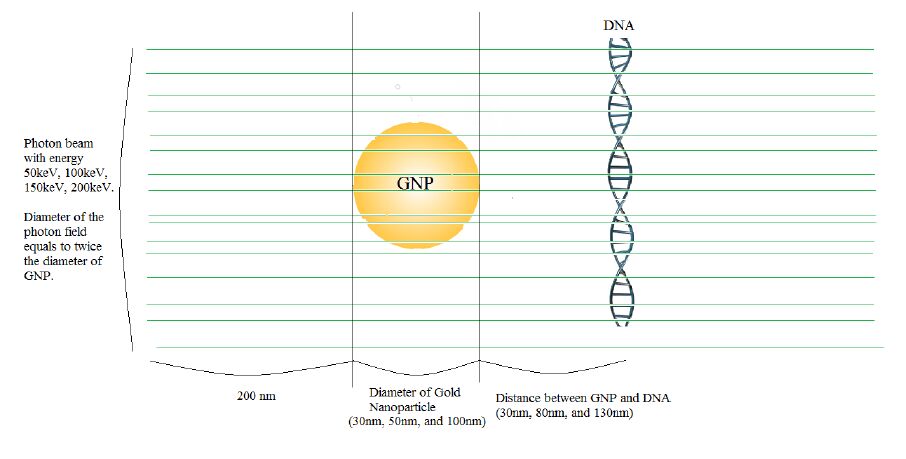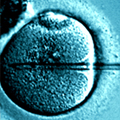| 1.
|
James Chun Lam Chow,
2019,
Chapter 111,
978-3-319-68254-9,
3661,
10.1007/978-3-319-68255-6_111
|
|
| 2.
|
Stefano Martelli, James C L Chow,
Dose Enhancement for the Flattening-Filter-Free and Flattening-Filter Photon Beams in Nanoparticle-Enhanced Radiotherapy: A Monte Carlo Phantom Study,
2020,
10,
2079-4991,
637,
10.3390/nano10040637
|
|
| 3.
|
Floriane Poignant, Caterina Monini, Étienne Testa, Michaël Beuve,
Influence of gold nanoparticles embedded in water on nanodosimetry for keV photon irradiation,
2021,
0094-2405,
10.1002/mp.14576
|
|
| 4.
|
Ali Khodadadi, Hassan A. Nedaie, Mahdi Sadeghi, Mohammad R. Ghassemi, Asghar Mesbahi, Nooshin Banaee,
Determination of the dose enhancement exclusively in tumor tissue due to the presence of GNPs,
2019,
145,
09698043,
39,
10.1016/j.apradiso.2018.11.013
|
|
| 5.
|
James C. L. Chow,
Depth Dose Enhancement on Flattening-Filter-Free Photon Beam: A Monte Carlo Study in Nanoparticle-Enhanced Radiotherapy,
2020,
10,
2076-3417,
7052,
10.3390/app10207052
|
|
| 6.
|
Ting Guo,
2018,
Chapter 8,
978-3-319-78002-3,
269,
10.1007/978-3-319-78004-7_8
|
|
| 7.
|
James Chun Lam Chow,
2020,
Chapter 2-1,
978-3-030-11155-7,
1,
10.1007/978-3-030-11155-7_2-1
|
|
| 8.
|
F. Moradi, Kh Rezaee Ebrahim Saraee, S.F. Abdul Sani, D.A. Bradley,
Metallic nanoparticle radiosensitization: The role of Monte Carlo simulations towards progress,
2021,
180,
0969806X,
109294,
10.1016/j.radphyschem.2020.109294
|
|
| 9.
|
James C. L. Chow,
Recent progress in Monte Carlo simulation on gold nanoparticle radiosensitization,
2018,
5,
2377-9098,
231,
10.3934/biophy.2018.4.231
|
|
| 10.
|
Donglin Xia, Daming Hang, Yuanyuan Li, Wei Jiang, Jianfeng Zhu, Yin Ding, Haiying Gu, Yong Hu,
Au–Hemoglobin Loaded Platelet Alleviating Tumor Hypoxia and Enhancing the Radiotherapy Effect with Low-Dose X-ray,
2020,
14,
1936-0851,
15654,
10.1021/acsnano.0c06541
|
|
| 11.
|
James C.L. Chow,
2017,
9780323461443,
383,
10.1016/B978-0-323-46144-3.00015-5
|
|
| 12.
|
Dewmini Mututantri-Bastiyange, James C. L. Chow,
Imaging dose of cone-beam computed tomography in nanoparticle-enhanced image-guided radiotherapy: A Monte Carlo phantom study,
2020,
7,
2375-1495,
1,
10.3934/bioeng.2020001
|
|
| 13.
|
Esam Bashir Yahya, Amaal Mohammed Alqadhi,
Recent trends in cancer therapy: A review on the current state of gene delivery,
2021,
269,
00243205,
119087,
10.1016/j.lfs.2021.119087
|
|
| 14.
|
Sarkar Siddique, James C. L. Chow,
Application of Nanomaterials in Biomedical Imaging and Cancer Therapy,
2020,
10,
2079-4991,
1700,
10.3390/nano10091700
|
|
| 15.
|
James Chun Lam Chow,
2017,
Chapter 111-1,
978-3-319-48281-1,
1,
10.1007/978-3-319-48281-1_111-1
|
|
| 16.
|
Myriam Laprise-Pelletier, Teresa Simão, Marc-André Fortin,
Gold Nanoparticles in Radiotherapy and Recent Progress in Nanobrachytherapy,
2018,
7,
21922640,
1701460,
10.1002/adhm.201701460
|
|
| 17.
|
Elena Vlastou, Stefanos Diamantopoulos, Efstathios P. Efstathopoulos,
Monte Carlo studies in Gold Nanoparticles enhanced radiotherapy: The impact of modelled parameters in dose enhancement,
2020,
80,
11201797,
57,
10.1016/j.ejmp.2020.09.022
|
|
| 18.
|
Slobodan Milutinović, Miloš Vujisić,
Simulation-based correction of dose enhancement factor values in photon brachytherapy with metal nanoparticle targeting,
2020,
31,
1001-8042,
10.1007/s41365-020-00820-8
|
|
| 19.
|
James Chun Lam Chow,
2021,
9780128231524,
193,
10.1016/B978-0-12-823152-4.00001-6
|
|
| 20.
|
James C.L. Chow,
Computer method and modeling: Medical biophysics applications in cancer therapy, medical imaging and drug delivery,
2021,
8,
2377-9098,
233,
10.3934/biophy.2021017
|
|
| 21.
|
Sugumari Vallinayagam, Karthikeyan Rajendran,
2021,
Chapter 16,
978-3-030-67222-5,
339,
10.1007/978-3-030-67223-2_16
|
|
| 22.
|
Zaynah Sheeraz, James C.L. Chow,
Evaluation of dose enhancement with gold nanoparticles in kilovoltage radiotherapy using the new EGS geometry library in Monte Carlo simulation,
2021,
8,
2377-9098,
337,
10.3934/biophy.2021027
|
|
| 23.
|
Ngoc Han Huynh, James C. L. Chow,
DNA Dosimetry with Gold Nanoparticle Irradiated by Proton Beams: A Monte Carlo Study on Dose Enhancement,
2021,
11,
2076-3417,
10856,
10.3390/app112210856
|
|
| 24.
|
Zakia Akter, Fabiha Zaheen Khan, Md. Asaduzzaman Khan,
Gold Nanoparticles in Triple-Negative Breast Cancer Therapeutics,
2023,
30,
09298673,
316,
10.2174/0929867328666210902141257
|
|
| 25.
|
Afia Sadiq, James C. L. Chow,
Evaluation of Dosimetric Effect of Bone Scatter on Nanoparticle-Enhanced Orthovoltage Radiotherapy: A Monte Carlo Phantom Study,
2022,
12,
2079-4991,
2991,
10.3390/nano12172991
|
|
| 26.
|
Xiaoyu Song, Zhenkun Sun, Li Li, Lu Zhou, Shuanghu Yuan,
Application of nanomedicine in radiotherapy sensitization,
2023,
13,
2234-943X,
10.3389/fonc.2023.1088878
|
|
| 27.
|
James Chun Lam Chow,
2022,
9780128228197,
291,
10.1016/B978-0-12-822819-7.00002-8
|
|
| 28.
|
Yu Chen, Kaikai Wang, Feng Chen, Shuquan Chang, Haiqian Zhang,
Response of HPRT Gene Fragment Functionalized Gold Nanoparticles to Gamma Ray Irradiation,
2021,
37,
0910-6340,
309,
10.2116/analsci.20P248
|
|
| 29.
|
Safikur Rahman, Vijay Kumar, Anuj Kumar, Tasduq S. Abdullah, Irfan A. Rather, Arif Tasleem Jan,
Molecular Perspective of Nanoparticle Mediated Therapeutic Targeting in Breast Cancer: An Odyssey of Endoplasmic Reticulum Unfolded Protein Response (UPRER) and Beyond,
2021,
9,
2227-9059,
635,
10.3390/biomedicines9060635
|
|
| 30.
|
Armando Spina, James C. L. Chow,
Dosimetric Impact on the Flattening Filter and Addition of Gold Nanoparticles in Radiotherapy: A Monte Carlo Study on Depth Dose Using the 6 and 10 MV FFF Photon Beams,
2022,
15,
1996-1944,
7194,
10.3390/ma15207194
|
|
| 31.
|
Mehwish Jabeen, James C. L. Chow,
Gold Nanoparticle DNA Damage by Photon Beam in a Magnetic Field: A Monte Carlo Study,
2021,
11,
2079-4991,
1751,
10.3390/nano11071751
|
|
| 32.
|
James Chun Lam Chow,
2021,
Chapter 2,
978-3-030-36267-6,
2989,
10.1007/978-3-030-36268-3_2
|
|
| 33.
|
James Chun Lam Chow,
2021,
9780128224151,
281,
10.1016/B978-0-12-822415-1.00014-7
|
|
| 34.
|
Gilnaz Omyan, Somayeh Gholami, Abbas Ghasemi Zad, Mara Severgnini, Francesco Longo, Faraz Kalantari,
Monte Carlo simulation and analytical calculation methods to investigate the potential of nanoparticles for INTRABEAM® IORT machine,
2020,
30,
15499634,
102288,
10.1016/j.nano.2020.102288
|
|
| 35.
|
Sikandar Shaikh,
2022,
Chapter 12,
978-981-16-9534-6,
147,
10.1007/978-981-16-9535-3_12
|
|
| 36.
|
Christine A. Santiago, James C. L. Chow,
Variations in Gold Nanoparticle Size on DNA Damage: A Monte Carlo Study Based on a Multiple-Particle Model Using Electron Beams,
2023,
13,
2076-3417,
4916,
10.3390/app13084916
|
|
| 37.
|
James C. L. Chow,
2024,
Chapter 7,
978-981-97-0220-6,
177,
10.1007/978-981-97-0221-3_7
|
|
| 38.
|
James C. L. Chow, Harry E. Ruda,
Mechanisms of Action in FLASH Radiotherapy: A Comprehensive Review of Physicochemical and Biological Processes on Cancerous and Normal Cells,
2024,
13,
2073-4409,
835,
10.3390/cells13100835
|
|
| 39.
|
Mehran Mohseni, Arezoo Kazemzadeh, Nafiseh Ataei, Habiballah Moradi, Akbar Aliasgharzadeh, Bagher Farhood,
Study on the dose enhancement of gold nanoparticles when exposed to clinical electron, proton, and alpha particle beams by means of Geant4,
2020,
10,
2228-7477,
286,
10.4103/jmss.JMSS_58_19
|
|
| 40.
|
Ali Taheri, Mayeen Uddin Khandaker, Farhad Moradi, David Andrew Bradley,
A review of recent advances in the modeling of nanoparticle radiosensitization with the Geant4-DNA toolkit,
2023,
212,
0969806X,
111146,
10.1016/j.radphyschem.2023.111146
|
|
| 41.
|
Adil Bardane, Nabil Maalej, El Mahjoub Chakir, El Mehdi Al Ibrahmi,
Gold nanoparticle effect on dose and DNA damage enhancement in the vicinity of gold nanoparticles,
2024,
3,
27731839,
100126,
10.1016/j.nucana.2024.100126
|
|
| 42.
|
Fatemeh S. Rasouli, S. Farhad Masoudi,
A simulation study on the effect of penetration of gold nanoparticles in the cytoplasm of healthy eye organs on dose enhancement of brachytherapy,
2024,
100,
0955-3002,
1462,
10.1080/09553002.2024.2381496
|
|
| 43.
|
Muhammad Arif, Ayesha Fazal Nawaz, Shahid Ullah khan, Hasnat Mueen, Fizza Rashid, Hassan A. Hemeg, Abdur Rauf,
Nanotechnology-based radiation therapy to cure cancer and the challenges in its clinical applications,
2023,
9,
24058440,
e17252,
10.1016/j.heliyon.2023.e17252
|
|
| 44.
|
Joanna Depciuch, Paweł Jakubczyk, Dorota Jakubczyk, Bartosz Klebowski, Justyna Miszczyk, Magdalena Parlinska‐Wojtan,
Modeling Absorption Dynamics of Differently Shaped Gold Glioblastoma and Colon Cells Based on Refractive Index Distribution in Holotomographic Imaging,
2024,
1613-6810,
10.1002/smll.202400778
|
|
| 45.
|
Paul T. Lawrence, Avery S. Daniels, Allison J. Tierney, E. Charles H. Sykes, Charles R. Mace,
Ligand Shell Thickness of PEGylated Gold Nanoparticles Controls Cellular Uptake and Radiation Enhancement,
2024,
2470-1343,
10.1021/acsomega.4c06568
|
|
| 46.
|
Joana Antunes, Catarina I G Pinto, Maria Paula Cabral Campello, Pedro Santos, Filipa Mendes, António Paulo, Jorge M Sampaio,
Utility of realistic microscopy-based cell models in simulation studies of nanoparticle-enhanced photon radiotherapy,
2024,
10,
2057-1976,
025015,
10.1088/2057-1976/ad2020
|
|
| 47.
|
Zi Fu, Kun Li, Han Wang, Yuhan Li, Jian Zhang, Jingwei Zhou, Jiajia Hu, Dong Xie, Dalong Ni,
Spectral computed tomography-guided radiotherapy of osteosarcoma utilizing BiOI nanosheets,
2023,
166,
17427061,
615,
10.1016/j.actbio.2023.05.026
|
|
| 48.
|
Ali Taheri, Mayeen Uddin Khandaker, Farhad Moradi, David Andrew Bradley,
A simulation study on the radiosensitization properties of gold nanorods,
2024,
0031-9155,
10.1088/1361-6560/ad2380
|
|
| 49.
|
Amrit Kaphle, Sandun Jayarathna, Sunil Krishnan, Sang Hyun Cho,
Monte Carlo study of gold nanoparticle‐mediated radiosensitization effects using nanoscale cell model combined with fractal‐based DNA model,
2025,
0094-2405,
10.1002/mp.17676
|
|
| 50.
|
L.F. Araujo, T.C.F. Fonseca,
In silico Monte Carlo with novel particle tagging: Assessing gold radiosensitivity in voxelized scenario of brachytherapy,
2025,
220,
09698043,
111745,
10.1016/j.apradiso.2025.111745
|
|
| 51.
|
James C. L. Chow,
2025,
Chapter 7,
978-981-96-1123-2,
147,
10.1007/978-981-96-1124-9_7
|
|
| 52.
|
Christopher C. Perry, Reinhard W. Schulte, Ryan N. Fuller, Nathan R. Wall, Kevin E. Nick, Magdalena Wegrzyn, Jamie R. Milligan,
Integrating gold nanostars into condensed DNA,
2025,
03044165,
130793,
10.1016/j.bbagen.2025.130793
|
|










 DownLoad:
DownLoad: 



